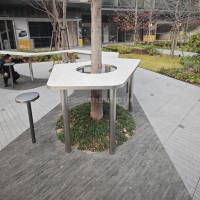Welcome to the website for landscape facilities products and knowledge.
How do manufacturers test the trash can's resistance to prolonged exposure to acidic substances?
Manufacturers rigorously test trash cans for resistance to acidic substances to ensure long-term durability in harsh environments. The process begins with selecting representative samples of the trash can material, often plastics like HDPE or stainless steel. These samples are submerged in acidic solutions of varying concentrations, simulating real-world conditions such as exposure to food waste or cleaning chemicals.
Accelerated aging tests are conducted by exposing the material to elevated temperatures, speeding up chemical reactions to predict long-term effects. Periodic inspections measure changes in structural integrity, color fading, and surface roughness. Advanced techniques like FTIR spectroscopy analyze molecular degradation, while stress tests evaluate mechanical strength post-exposure.
Industry standards like ASTM G154 for plastic durability guide these procedures. Some manufacturers perform real-time testing over months or years for critical applications. The data helps engineers optimize material formulations and thickness to balance cost and performance, ultimately delivering trash cans that withstand acidic challenges while maintaining functionality.
Related search:

Recommendation
An outdoor bar counter with stainless steel and terrazzo materials in an irregular shape